Marko has a broad knowledge of a variety of sports but more in-depth knowledge of tennis. He has been involved in strength and conditioning coaching in tennis since 2008, e.g. coaching two-time Finnish national championship medalist and other elite/high level tennis players in Finland. He holds a M.Sc. degree in Sport Coaching and Fitness Testing Science, and is also an iTPA Certified Tennis Performance Specialist (2014) and a certified Massage Therapist. A few years back he studied the physical aspects of tennis - effect of neuromuscular functioning in fast response situation in tennis. Marko is currently conducting an ongoing sport psychological study for his doctoral dissertation, which is also a cooperation continuum with the International Tennis Federation (ITF) started during the preceding pilot study. He has adopted a holistic and evidence-based approach to help tennis players to maximize their potential (available on project basis or as a part-time coach). The iTPA CTPS course & course material provides one great resource to do that.
|
Marko Nieminen, CTPS
Marko has a broad knowledge of a variety of sports but more in-depth knowledge of tennis. He has been involved in strength and conditioning coaching in tennis since 2008, e.g. coaching two-time Finnish national championship medalist and other elite/high level tennis players in Finland. He holds a M.Sc. degree in Sport Coaching and Fitness Testing Science, and is also an iTPA Certified Tennis Performance Specialist (2014) and a certified Massage Therapist. A few years back he studied the physical aspects of tennis - effect of neuromuscular functioning in fast response situation in tennis. Marko is currently conducting an ongoing sport psychological study for his doctoral dissertation, which is also a cooperation continuum with the International Tennis Federation (ITF) started during the preceding pilot study. He has adopted a holistic and evidence-based approach to help tennis players to maximize their potential (available on project basis or as a part-time coach). The iTPA CTPS course & course material provides one great resource to do that.
0 Comments
By Jonny Fraser (iTPA MTPS, MSc, CSCS), Owner of Science in Tennis Medicine balls are often used in tennis helping develop, endurance, strength and power. They provide a good tool to add external resistance, develop torso strength and stability whilst allowing training of tennis specific movements through the kinetic chain. Understanding what the intention of using medicine ball training is important. The first method involves using medicine balls to add external load. An example may include when players are performing squats or lunge patterns. The weight and position of the medicine ball can be changed accordingly to progress or regress. Particularly at a junior level the introduction of medicine balls plays an important progression from body weight movements. Furthermore, for travelling players medicine balls may be an important piece of ‘on the road’ equipment to add external load when training. Small hotel gyms often also have medicine balls. Medicine ball can be used to develop a stable, strong torso or core stability. From a fundamental movement perspective the trunk muscles can brace or rotate, whilst also being able to flex and extend. Often it is these rotational movements we train using medicine balls (Figure 1) alongside working the kinetic chain. Energy is transferred from ground force reactions, through the lower body to the trunk region, scapular, elbow and then wrist. Rotation (angular momentum) and diagonal patterns of movements are foundations of tennis movements. Tennis requires large amounts of rotation from the trunk, shoulders, and contralateral movements across slings of the body - hence training these two methods seems important. Movements such as lunges with rotations (Figure 1) or diagonal pattern movements such as wood chops or cross body Using medicine ball training in tennis requires awareness of how to train the torso and the whole body. Fletcher (2014) considers four areas in which you need to train the torso. These include ‘random perturbations’, ‘rotation and rotational control’, ‘diagonal patterns’ and ‘force through the kinetic chain’. Random perturbations predominantly involve the ability to brace and be stable when external forces are placed the body. An example when using a medicine ball may be an isometric hold in a lunge position (Figure 2). Perturbations are then added by the ball being pushed in various directions and the athlete stabilising his or her body. Rotation (angular momentum) and diagonal patterns of movements are foundations of tennis movements. Tennis requires large amounts of rotation from the trunk, shoulders, and contralateral movements across slings of the body - hence training these two methods seems important. Movements such as lunges with rotations (Figure 1) or diagonal pattern movements such as wood chops or cross body lunges provide examples (Figure 3). They both help develop stability, motor control and synchronisation of the body. This will benefit tennis performance and help reduce the likelihood of injury through efficient movement patterning. The last type of training is kinetic chain training. Training methods provide an excellent stimulus for developing muscle synchronisation, motor control and utilising ground force reactions. This will all have benefits to performance and reducing injury risk. Example exercises maybe a soccer overhead throw or a sideways throw (Figure 4). However for a true performance transfer effect we need to show an understanding of the biomechanics of tennis. This may include factors such as the stance, the type of shot (e.g. single or double handed backhand), weight shift, follow through and separation angles of the body. When using a medicine ball for example to train a step in stance shifting the weight from the back to the front foot should occur (Bahamonde and Knudson, 2003). Another example is the open stance forehand where emphasis should be made to the player about the separation angle between the hip and shoulder. That is the shoulder rotates further round than the hip (by average by 13°) to allow the player to ‘wind up’ and maximise elasticity of the body and angular momentum (Bahamonde and Knudson 2003). Furthermore the separation angle between the hips and shoulders is greater in the single handed backhand than in the double handed backhand (Genevois et al., 2015). Therefore understanding the needs of your athlete, the intention of your training and specificity of the sport when using medicine ball should reflect the training methods used (Table 1). Table 1: Training methods for medicine ball use. References
Bahamonde, R. and Kundson, D. (2003). Kinetics of the upper extremity in the open and square tennis forehand. Journal of science and medicine in sport, 6(1), 88-101. Fletcher, I. (2014). Myths and reality: training the torso. Professional strength and conditioning, 33, 25-29. Genevois, C., Reaid, M., Rogowski, I. and Crespo, M. (2015). Performance factors related to different tennis backhand groundstrokes: a review. Journal of sport science and medicine, 14 (1), 194-202. iTPA named official tennis-specific sport science educational organization for USPTA ATLANTA – The United States Professional Tennis Association (USPTA) has partnered with a renowned tennis organization to provide additional educational opportunities for its members. The International Tennis Performance Association (iTPA) is now the official tennis-specific sport science educational organization for the USPTA. This partnership allows members of both organizations to take advantage of additional education opportunities. “As the leading tennis-teaching organization, continually providing educational pathways for our members is one of our highest priorities,” USPTA CEO John Embree said. “This partnership with iTPA highlights both organizations’ commitment to quality education in the tennis industry.” USPTA members who register for the iTPA’s Tennis Performance Trainer (TPT) certification program will receive a special member benefit. All USPTA members who sign up for the TPT certification program will have access to the online exercise video library, which will aid in preparation for the TPT certification ($29.99 value), plus a discount code for other iTPA educational materials. “Providing quality education to the tennis industry is a cornerstone of the mission of the iTPA,” said iTPA Executive Director Dr. Mark Kovacs. “This partnership will allow USPTA tennis teaching professionals to receive the latest information on tennis specific fitness, performance and injury prevention education to further enhance their careers.” The TPT program is specifically designed for tennis coaches and fits within the mission of USPTA. The TPT certification program will be the major requirement for the updated USPTA Specialist in Sport Science Degree and the iTPA. For more information on USPTA certification, visit www.uspta.com/certification. About iTPA The iTPA is the worldwide education and certification organization for trainers, coaches and specialists who are passionate about tennis specific performance enhancement and injury prevention. The education company offers a professional training and education process that establishes recognition through three certifications: Tennis Performance Trainer (TPT), Certified Tennis Performance Specialist (CTPS) and Master Tennis Performance Specialist (MTPS). Visit the iTPA website at www.itpa-tennis.org. By Mark Kovacs, PhD, FACSM, CSCS*D, MTPS
iTPA Executive Director Translated By Eduardo Vicencio, Director Spanish Education El Abierto de Estado Unidos ha visto un número de jugadores batallar con calambres en su edición del 2015. Durante muchos años los jugadores han tenido que hacer frente a las condiciones de calor y humedad cuando compiten en Nueva York. En general, los días mas difíciles en Nueva York tienen temperaturas entre los 30-35 grados con una humedad que varia de 45-60%. Esta temperatura y humedad no son ajenas a otras partes de los Estados Unidos durante el periodo de verano. Así que, ¿por qué algunos de los mejores jugadores en el mundo batallan de forma severa para combatir las condiciones? También, ¿qué puede hacer el jugador regular para evitar el temido ejercicio asociado con los calambres musculares? Yo he sido muy afortunado en hacer investigación o colaborar con investigadores acerca de los calambres musculares por mas de 15 años. He trabajado en tres diferentes laboratorios de fisiología termal bajo algunas de las mentes mas brillantes en la materia del calor, la humedad, la regulación de temperatura y los calambres en los atletas. Estos laboratorios están diseñados para estudiar todo; incluyendo la sangre, la sudoración, la orina, la saliva y todo lo que este en medio de. Muchas preguntas acerca de los calambres has sido resueltas y otras permanecen sin contestar. Los calambres es un problema multifacético y existen muchos diferentes tipos de calambres que ocurren en los atletas. Los calambres por fatiga pueden ocurrir en condiciones de calor o de frío. Los calambres relacionados con el calor son diferentes, al igual que los calambres nocturnos y de igual forma los calambres del ejercicio excéntrico son diferentes (piensa en hacer 100 flexiones y extensiones de pantorrilla seguidas). También, algunos atletas son mas propensos a los calambres que otros. Como resultado, para resolver el problema de los calambres se requiere de una solución personalizada que venga de una persona altamente capacitada que tenga un conocimiento profundo acerca de las diferentes causas de los calambres y las soluciones adecuadas para preparar al atleta y prevenir los calambres. Con un plan de entrenamiento adecuado, un monitoreo apropiado y con conocimiento, es posible limitar o eliminar por completo los calambres. Abajo hay algunas áreas iniciales que deben ser parte de un programa de entrenamiento con el objetivo de limitar la posibilidad de tener calambres musculares relacionados al ejercicio durante el juego de tenis. 1) Nivel de acondicionamiento pobre o incorrecto Esta es usualmente la causa principal. Muchos atletas con la buena intención de entrenar simplemente no se preparan de la manera correcta para las condiciones. Esto incluye entrenar específicamente para el tenis. Como resultado muchos atletas son expuestos a una serie de ejercicios duros, los cuales son de carácter general y no están entrenando al atleta para estar completamente preparado para las demandas de los partidos. Recuerda que el tenis se trata de movimientos explosivos en periodos de tiempo cortos con patrones de movimiento específicos, con un periodo de recuperación corto (<25 segundos). En muchos casos el atleta no entrenará específicamente para las demandas del tenis, lo que ocasionará que el atleta este mal preparado (a pesar de que haya pasado y sudado por muchos ejercicios muy duros durante el entrenamiento). El viejo adagio de entrenar de forma inteligente es mucho mejor que entrenar muy duro – si es que el entrenar muy duro no es inteligente. 2) Nutrición La mayoría de los mejores jugadores están haciendo un buen trabajo en cuanto a la nutrición y el entendimiento de las necesidades de un atleta elite en el tenis. Sin embargo, muchos jugadores (en especial los jóvenes) no están llevando correctamente un plan de nutrición individual. La nutrición especifica al tenis es altamente individual y cada jugador tiene una fisiología diferente y necesita una composición de nutrientes que se basen en la biología particular del jugador, hábitos de entrenamiento, estilo de juego y las necesidades energéticas. Recuerda que cada quien quema una cantidad diferente de grasas y carbohidratos durante el día especialmente durante el entrenamiento y la competencia. También es diferente la forma en la que el cuerpo usa los nutrientes; estos son usados diferentemente. Muchos individuos pueden tener deficiencias en algunas áreas que necesiten ajuste. 3) Hidratación y Electrolitos Cuando se habla de los calambres siempre se habla de la hidratación del atleta. A pesar de que la hidratación es un aspecto importante en esta ecuación no es por lo general la única respuesta para detener los calambres. La mayoría de los mejores jugadores esta consciente de las necesidades de la hidratación y la mayoría hace un buen trabajo en hidratarse adecuadamente. El reto es que el cuerpo humano solo puede reemplazar entre 1.5-1.8 litros de líquido por hora cómodamente. Sin embargo, los atletas tenistas pueden sudar hasta 3 litros por hora (en especial los hombres). Así que, el balance de la hidratación siempre resulta ser un reto y es importante que los atletas lleguen a la cancha hidratados correctamente. El electrolito mas importante que se pierde a través de la sudoración es el sodio y muchos jugadores no están teniendo una suplementación suficiente de sodio los días previos a los partidos. La hidratación en la cancha es importante pero no es la respuesta. La cantidad de líquido que se puede consumir de manera segura y eficiente en los partidos es limitada. Por lo tanto, las rutinas previas al partido, las rutinas del día anterior y las de la semana antes del partido son muy importantes. Otros electrolitos que juegan un rol son el potasio (pero a un nivel muy bajo), magnesio y calcio. Los tenistas tienen que tener precaución y ser conscientes antes y después de los partidos. Muchos jugadores con buenas intenciones de hidratarse lo puede hacer de mas. Beber líquidos en exceso puede ser una preocupación si el líquido que se toma es solamente agua. El problema es que cuando el jugador suda, tiene una pérdida de liquido (el cual contiene mucho sodio) y reemplaza el liquido de la sudoración solamente con agua. Como resultado, el contenido de electrolitos en la sangre se diluye lo que puede tener consecuencias de salud muy significativas. Este problema se le llama algunas veces intoxicación de agua o el termino médico “hiponatremia”. 4) Fatiga Neuromuscular La teoría neuromuscular del ejercicio relacionada a los calambres musculares sugiere que la sobrecarga muscular y la fatiga neuromuscular causan un desbalance entre impulsos excitadores de los propioceptores musculares que controlan el alargamiento y la tensión en los músculos. Esto tiende a ocurrir cuando el músculo se esta contrayendo en una posición donde el musculo ya esta en fase de acortamiento. Esto es muy común (la posición de acortamiento) cuando los jugadores de tenis se mueven. Es por esto que el sistema nervioso juega un papel significativo y el trabajar en mejorar estrategias de relajación para el sistema nervioso puede reducir la posibilidad de calambres musculares. Esta es una respuesta a el porque dan calambres musculares cuando los niveles de hidratación son adecuados o cuando estos ocurren en condiciones de frío. Buenos métodos de entrenamiento para tener una buena preparación en este caso incluyen movimientos de velocidad a alta velocidad y movimientos de potencia que incluyan pliometría. También movimientos de potencia a alta velocidad para entrenar el cuerpo a manejar este tipo de movimientos en diferentes condiciones. 5) Falta de control emocional Es muy importante que los atletas elite en todos los deportes desarrollen estrategias para hacer frente a las condiciones de humedad y de calor. Hay que tener muy bien definidas las rutinas entre puntos y los cambios para conservar energía, control y mantener los niveles de energía adecuados. Los atletas que son altamente emocionales, que hablan mucho o que en general queman demasiada energía podrían tener mas problemas ya que queman mas calorías por minuto lo que requiere mas energía, etc. Para mayor información acerca de calambres, nutrición, hidratación y entrenamiento adecuado para jugadores de tenis la puedes encontrar en los programas de certificación de TPT o de CTPS que son parte de International Tennis Performance Association (iTPA) www.itpaespanol.org By Mark Kovacs, PhD, FACSM, CSCS*D, MTPS iTPA Executive Director @mkovacsphd www.mark-kovacs.com The 2015 US Open has seen a number of players struggle with cramps this year. Many years at the US Open players struggle when they compete in New York in the hot and humid conditions. In general the hottest, most difficult days in New York have temperatures between 85-95°F and 45-60% humidity. This temperature and humidity is not dissimilar to many parts of the US throughout the entire summer period. Therefore, why do some of the best players in the world struggle so mightily to combat the conditions? Also, what can the regular tennis player do to help avoid the dreaded exercise associated muscle cramps? I have been fortunate to have been around cramping research and researchers for more than 15 years. I have worked in three different thermal physiology labs under some of the smartest minds in the fields of heat, humidity, temperature regulation and cramping in athletes. These labs are designed to study everything including blood, sweat, urine, saliva and everything in between. Many questions about cramping have been answered, and some questions still remain. Cramping is a multi-faceted problem and many different types of cramps occur in athletes. Fatigue cramps can occur in hot and cold conditions. Heat related cramps are different, night time cramps are different again and eccentric exercise (think of doing 100 calf raises in a row) cramping differs as well. Also, some athletes are more cramp-prone than other athletes. As a result, solving the cramping problem requires a personalized solution from a highly trained individual who understands the many causes of cramping and appropriate solutions to prepare the athlete and prevent cramping. With the right training and appropriate monitoring and education, limiting and completely avoiding cramping is possible. Below are some initial areas that should be part of a training program to limit the chance of experiencing exercise associated muscle cramps during tennis play. 1) Poor and/or incorrect conditioning This is usually the most common cause. Many well-meaning athletes are just not training the correct way to prepare for the conditions. This includes training specifically for tennis. As a result many athletes are being put through tough workouts, but these general workouts are not actually training the athlete to be fully prepared for the demands of matches. Remember that tennis is all about quick explosive movements over short periods of time in specific movement pattern, with short recovery periods (<25 seconds). Many times the tennis player will not train specifically for the demands of tennis, which can cause the athlete to be ill prepared (even though a lot of hard work and sweat has been put into training). The old adage train smart is a lot better than just training hard – if hard training is not smart. 2) Nutrition Most of the top players are doing better with nutrition and understanding the needs of the elite tennis athlete. However, many players (especially young players) are still not taking care of individual nutrition well. Tennis specific nutrition is highly individual and each player has a different physiology and needs a different composition of nutrients based on their unique biology, training habits, game style and energy needs. Remember that everyone burns different amount of fats and carbohydrates throughout the day and especially during training and competition. How nutrients are used by the body are somewhat different as well; nutrients are used differently. Many individuals may have deficiencies in different areas that may need adjustments. 3) Hydration & Electrolytes An athlete’s hydration is always talked about when it comes to cramping. Although hydration is an important aspect of the equation it is usually not the sole answer to stop cramping alone. Most elite tennis players are aware of the hydration needs, and generally most do a good job of taking care of the hydration appropriately. The challenge is that the human body can only replace between 1.5-1.8 liters of fluid per hour comfortably. However, tennis athletes (especially male athletes) can sweat up to 3 liters per hour. Therefore, the balance of hydration is always somewhat of a challenge, and it is very important that the athletes come onto the court well-hydrated. The major electrolyte lost in sweat is sodium, and many tennis players are not supplementing with enough sodium in the days leading up to matches. On-court hydration, although important, is usually not the answer. Only so much can safely and effectively be consumed during matches, so the pre-match routines and day before and week before match routines are very important. Other electrolytes that can play a role are potassium (although at a much lower extent), magnesium and calcium. There is one caution that players need to be aware of before and after tennis matches. Many well-meaning players may try to overdrink. Overdrinking is a concern, especially if the fluid is just water. The problem is that once an athlete sweats out a lot of fluid (sodium rich fluid) and then replaces the lost sweat just with water, the electrolyte content of the blood becomes diluted which can result in significant health consequences. This is sometimes termed water intoxication, or the more medical term of “hyponatremia.” 4) Neuromuscular Fatigue The neuromuscular theory of exercise related muscle cramping suggests that muscle overload and neuromuscular fatigue cause an imbalance between excitatory impulses from muscle proprioceptors that control length and tension in muscles. These tend to occur when the muscle is contracting in an already-shortened position. This is very common (the shortened position) when tennis players move. Therefore, the nervous system plays a significant role and working on better strategies of relaxation of the nervous system may help to reduce the likelihood of muscle cramps. This is likely the explanation for much of the muscle cramping that occurs when fluid levels are appropriate and sometimes when cramping occurs in colder conditions. Good methods to train this in preparation is to incorporate high velocity speed and power movements including plyometric and high velocity power movements to train the body to handle these movements in varying conditions. 5) Lack of Emotional Control Developing strategies to cope with hot and humid conditions is very important for elite athletes in all sports. Having well defined between point and changeover routines is very important to conserve energy and control/manage energy levels appropriately. Athletes that are highly emotional, talkative or generally burn a lot of excessive energy may result in more problems just due to more calories being burned each minute which requires more energy, etc. Check out more information about cramping, nutrition, hydration and appropriate training for tennis players in either the Tennis Performance Trainer (TPT) certification program (www.itpa-tennis.org/tpt.html ) or the Certified Tennis Performance Specialist (CTPS) program through the International Tennis Performance Association (iTPA). @itpatennis www.itpa-tennis.org Below you will see the abstract from the full report and also some of the major principles outlined in the report. Please let us know if you agree with the points made and if you have any thoughts specifically related to this topic.
“The health, fitness and other advantages of youth sports participation are well recognised. However, there are considerable challenges for all stakeholders involved—especially youth athletes—in trying to maintain inclusive, sustainable and enjoyable participation and success for all levels of individual athletic achievement. In an effort to advance a more unified, evidence-informed approach to youth athlete development, the IOC critically evaluated the current state of science and practice of youth athlete development and presented recommendations for developing healthy, resilient and capable youth athletes, while providing opportunities for all levels of sport participation and success. The IOC further challenges all youth and other sport governing bodies to embrace and implement these recommended guiding principles.” General principles · Youth athlete development is contingent on an individually unique and constantly changing base of normal physical growth, biological maturation and behavioral development, and therefore it must be considered individually. · Allow for a wider definition of sport success, as indicated by healthy, meaningful and varied life-forming experiences, which is centered on the whole athlete and development of the person. · Adopt viable, evidence-informed and inclusive frameworks of athlete development that are flexible (using ‘best practice’ for each developmental level), while embracing individual athlete progression and appropriately responding to the athlete's perspective and needs. · Commit to the psychological development of resilient and adaptable athletes characterised by mental capability and robustness, high self-regulation and enduring personal excellence qualities—that is, upholding the ideals of Olympism. · Encourage children to participate in a variety of different unstructured (ie, deliberate play) and structured age-appropriate sport-related activities and settings, to develop a wide range of athletic and social skills and attributes that will encourage sustained sport participation and enjoyment. · Make a commitment to promote safety, health and respect for the rules, other athletes and the game, while adopting specific policies and procedures to avert harassment and abuse. · Across the entire athletic development pathway, assist each athlete in effectively managing sport-life balance to be better prepared for life after sport. Coaching · Provide a challenging and enjoyable sporting climate that focuses on each athlete's personal assets and mastery orientation. · Coaching practices should be informed by research-based developmental guidelines that promote flexibility and innovation, while accommodating individual skills and athletic development trajectories. · Coaching should be context-specific (eg, participation vs performance focus) and aligned with individual athletic readiness. · Coaching education programmes should assist coaches in establishing meaningful relationships that enrich the personal assets of their athletes and foster their own intrapersonal and interpersonal skills (eg, reflection and communicative skills). · Coaches should seek interdisciplinary support and guidance in managing a youth athlete's athletic development, fitness and health, and mental and social challenges and needs. Conditioning, testing and injury prevention · Encourage regular participation in varied strength and conditioning programmes that are suitably age based, quality technique driven, safe and enjoyable. · Design youth athlete development programmes comprising diversity and variability of athletic exposure, to mitigate the risk of overuse injuries and other health problems prompted by inappropriate training and competition that exceed safe load thresholds, while providing sufficient and regular rest and recovery, to encourage positive adaptations and progressive athletic development. · Maintain an ethical approach to, and effectively translate, laboratory and field testing to optimise youth sports participation and performance. · Develop, implement and continue to evaluate knowledge translation strategies and resources that will enhance injury prevention and promote health in youth athletes, such as the Get Set—Train Smarter injury prevention app developed by the IOC for the 2014 Youth Olympic Games · Promote evidence-informed injury prevention programmes, protective equipment legislation and rule changes that are context specific, adaptable and consistent with maintaining the integrity of the sport and participation goals. · Strictly adhere to a “No youth athlete should compete—or train or practice in a way that loads the affected injured area, interfering with or delaying recovery—when in pain or not completely rehabilitated and recovered from an illness or injury”. Nutrition, hydration and exertional heat illness · Dietary education for young athletes should emphasize optimal eating patterns to support health, normal growth and sport participation demands, with emphasis on a balanced intake of nutrient-dense carbohydrates, high-quality protein and sufficient dietary calcium, vitamin D and iron. · Youth athletes and their support personnel should be educated on the risks associated with dietary supplements and energy drinks. · Emphasise and mitigate the risks of sport-related EDs, DE and RED-S, by raising awareness through education, improving screening and treatment, and implementing applicable rule modifications. · Education and training on exertional heat illness risks and effective prevention and risk-reduction strategies (including practical preparation, offsetting measures and management and immediate response protocols) and policies should be regularly provided and emphasized to youth athletes, coaches and staff, and others overseeing or assisting with children and adolescents participating in outdoor sports. · A written emergency action plan and effective response protocols should be in place and practiced ahead of time with trained personnel, as well as readily available facilities on-site for managing and treating all forms of exertional heat illness and other medical emergencies, for all youth athletic activities, especially in the heat. Sport and sports medicine governing bodies and organisations · Sport and sports medicine governing bodies and organisations should protect the health and well-being of youth in sport by providing ongoing education, and fully implementing and monitoring practical, and effective, athlete safeguarding policies and procedures in all youth athlete programming · Youth athlete selection and talent development philosophies should be based on the physiological, perceptual, cognitive and tactical demands of the sport, and a long-term, individually variable developmental context. · Diversification and variability of athletic exposure between and within sports should be encouraged and promoted. · Competition formats and settings should be age and skill appropriate, while allowing for sufficient rest and recovery time between multiple same-day contests. Read the full report - http://bjsm.bmj.com/content/49/13/843.full By Ollie Stephens, CTPS, MTPS The World Tennis Fitness Conference has quickly become an integral part of the calendar of many tennis coaches, physical therapists, athletic trainers, strength & conditioning coaches, chiropractors and medical doctor’s calendar. I was lucky enough to be involved in this year’s conference as a moderator and as a speaker in a panel discussion, which also included Dr. Larry Lauer and Dr. Jeff Chandler. We discussed the team approach in developing a tennis player and to be on stage with two of the industry’s most recognized experts was a really fun experience for me personally and something I will never forget.
As I spent the weekend listening to lectures from some of the world’s most foremost tennis experts, a couple of things became plainly obvious to me: Firstly, the word that springs to mind was QUALITY. The standard of the speakers was second to none. From Martin Blackman, Allistair McCaw, Loren Landow, Dr. Mark Kovacs, Page Love, Dr. Dom Lausic etc., the list was a who’s who in the Tennis Fitness Industry. Every single presentation exuded quality and was a clear example of just how serious the iTPA is about raising the standard of coach’s education in the U.S.A. and Internationally. As an example, I had never heard of Loren Landow before. However, after his presentation on Speed and Movement training, I will certainly be following his work from now on. To hear from someone who regularly trains NFL, MMA, NBA and professional tennis players was a real treat and his wealth of information was truly world class. The second thing that really struck a cord with me was the quality of the attendees. All of the people attending the conference were themselves at the top end of the tennis industry and the networking opportunities and exchange of ideas was worth the cost of the conference alone. Just getting to know great coaches like Rob Carlbo, Jenny Walls-Robb and Jim Harp has been such a boost to my career, these professionals are such an inspiration to be around and to be able to pick their brains has been so much fun. So many great coaches and trainers where in attendance including individuals from Harvard University, Princeton University, The University of Michigan, The University of North Carolina – Chapel Hill (UNC), Auburn University, The University of Alabama, Georgia Tech, Georgia State University, Kennesaw State University, Lipscomb University, Carnegie Melon among many others. There were so many nuggets of information that I took from this year’s conference. Some take homes which I felt especially helpful were: · Loren Landow explaining the importance of first step speed and the ability to move effectively in all directions. · Allistair McCaw showing his great warm up routine that he uses with all his junior and professional tennis players, including his HBHA routine (Hips Before, Hips After). · Lalo Vicencio, always a favorite, showing some great lateral movement patterns and single leg stability exercises for junior tennis players. Showing some great ways to teach younger athletes how to decelerate safely. · Page Love explaining the best way to make sure your players have proper nutrition when they travel abroad, including some easy snacks that you can take with you to foreign destinations such as “Go Picnic,” ready to eat meals To conclude, I have been to many conferences, all over the world. In my opinion, the World Tennis Fitness Conference is already one of the best, if not, THE best educational opportunity for anyone interested in off court tennis training. A huge thanks must go to the International Tennis Performance Association, Mark and Mary Jo Kovacs and all of their staff for creating such a great event. Please follow the iTPA on facebook to see more than 300 photos from the conference www.facebook.com/itpatennis www.itpa-tennis.org @itpatennis By LaRue Cook, Certified Tennis Performance Specialist, Certified Strength and Conditioning Specialist Tennis requires the coordination, cooperation and synchronization of several body parts and muscle groups in order for you to be effective on the court. Yet, many tennis athletes who work out treat their bodies and their workouts as if their body is a collection of unrelated parts! They will often work one muscle at a time, in isolation. If this describes you, then please read on. These types of individual muscle exercises are called single-joint exercises and an example would be your standard bicep curl where the exercise targets that single muscle. Make no mistake, there is definitely a place in a workout for these types of exercises, for example, single-joint exercises are often used in a rehabilitation setting to specifically target an injured or repaired muscle or body part. It is also a great way to strengthen a particular muscle that may be weak and not adequately or safely doing its part to fulfill its role in more complex multi-joint movements required in tennis. By strengthening that single muscle we can make the entire chain of muscles more effective. For example, think of lining up a set of dominos so that when you tip over the first in the line, the successive domino knocks over the next and so on. Now what would happen if I replaced one of those dominos with one made of marshmellow? It probably would not be able to perform its duty in the chain by knocking over the next, or at best, would slow-down the process; it simply isn’t strong enough. To get that domino to perform its full function we’d need to strengthen it by replacing it with a ‘stronger’ domino. Similarly, we may need to train individual muscles so that they can adequately perform their chain duties.
However, once you’ve addressed any individual muscle weaknesses, in order to get more bang for our training buck, and to strengthen your body in a more functional way for tennis, it is best to spend most of your training time on what are known as multi-joint exercises. Performing the more complex multi-joint exercises (for example a squat that requires the movement of more than a single joint and muscle group) will better prepare you for similar types of movements and strength needs that you will experience on the court. These types of train the chain exercises will help you develop speed, strength and power for tennis by training the various muscle groups together – as they would be used on the court. So remember, when training for tennis, “Train the Chain!” About the Author: LaRue is a CTPS, CSCS and also holds specialty certifications as a Youth Conditioning Specialist. LaRue travels the US providing specialty training and programming to Country Clubs and other organizations, working with tennis players and other athletes providing one-on-one and team Strength and Conditioning and Post-Rehab training. LaRue also serves on the Board of Examiners for the National Board of Fitness Examiners. |
iTPA Blog
The leader in tennis fitness, performance, education and tennis certification. Get iTPA Certified today! Categories
All
|
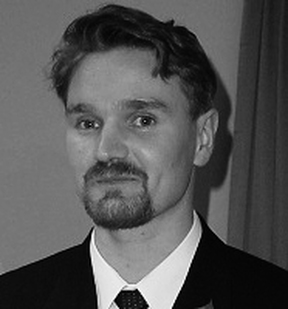

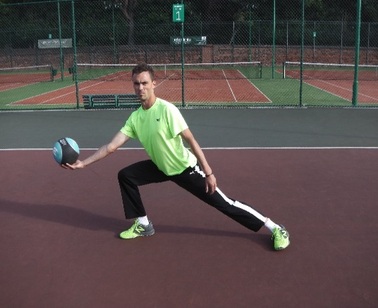
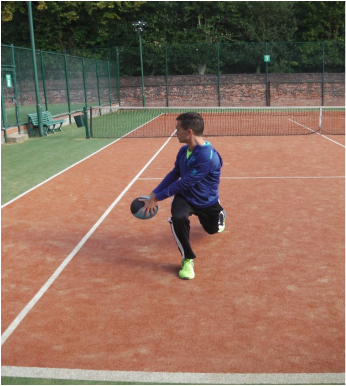
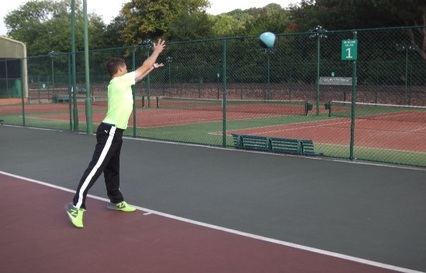
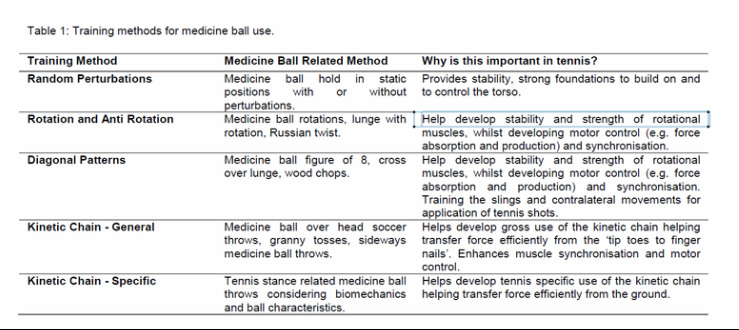
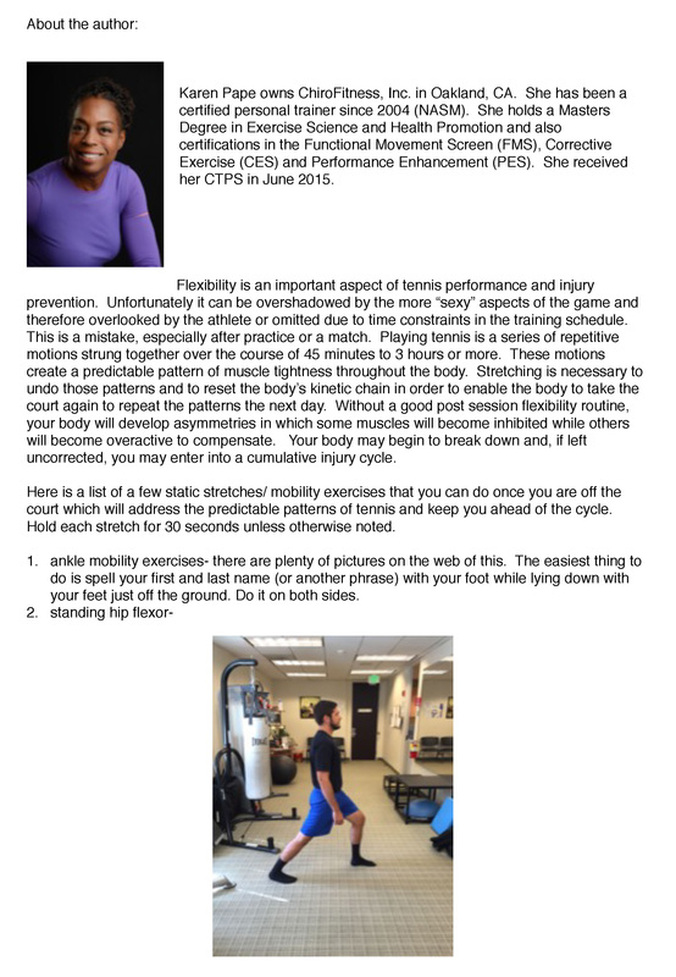
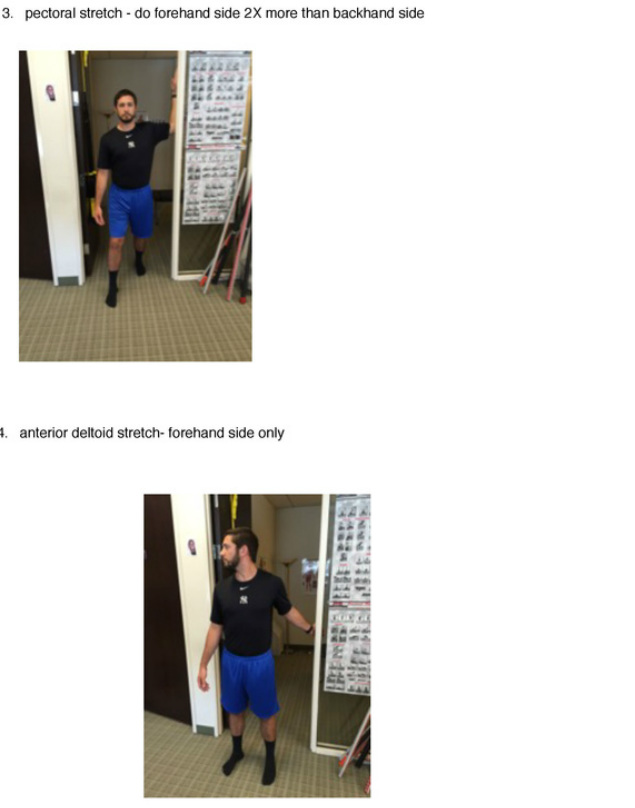
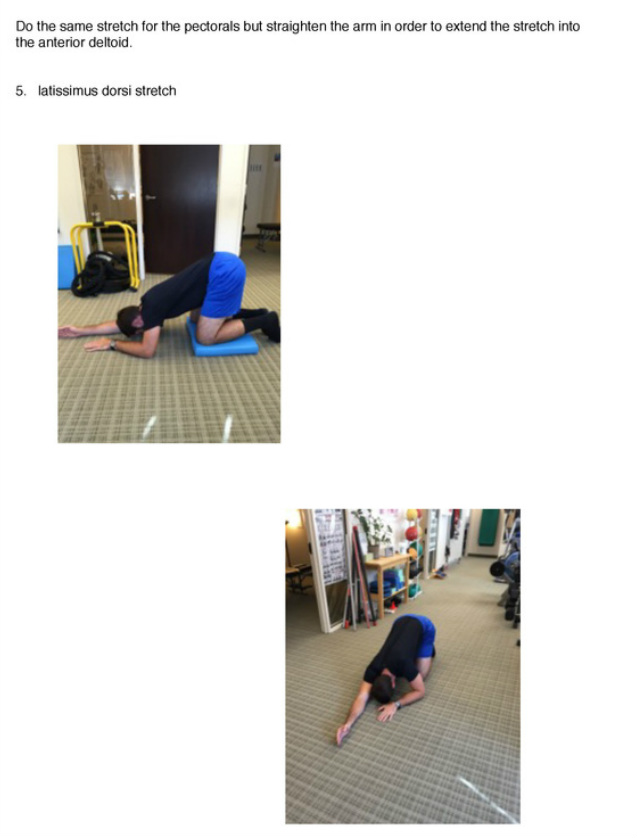
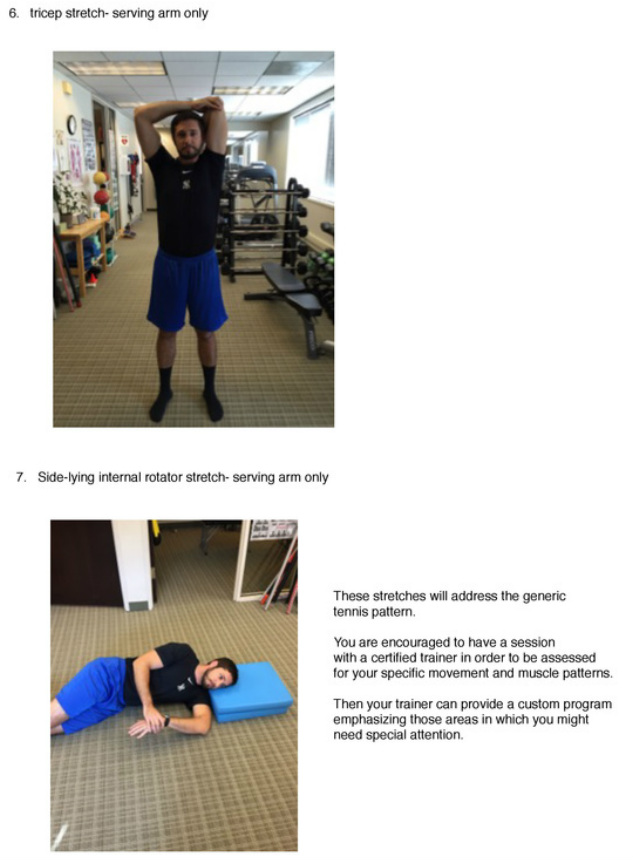
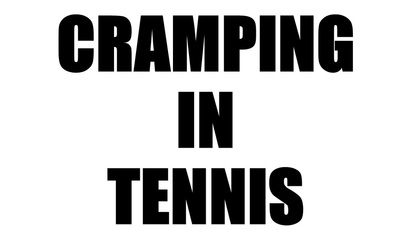
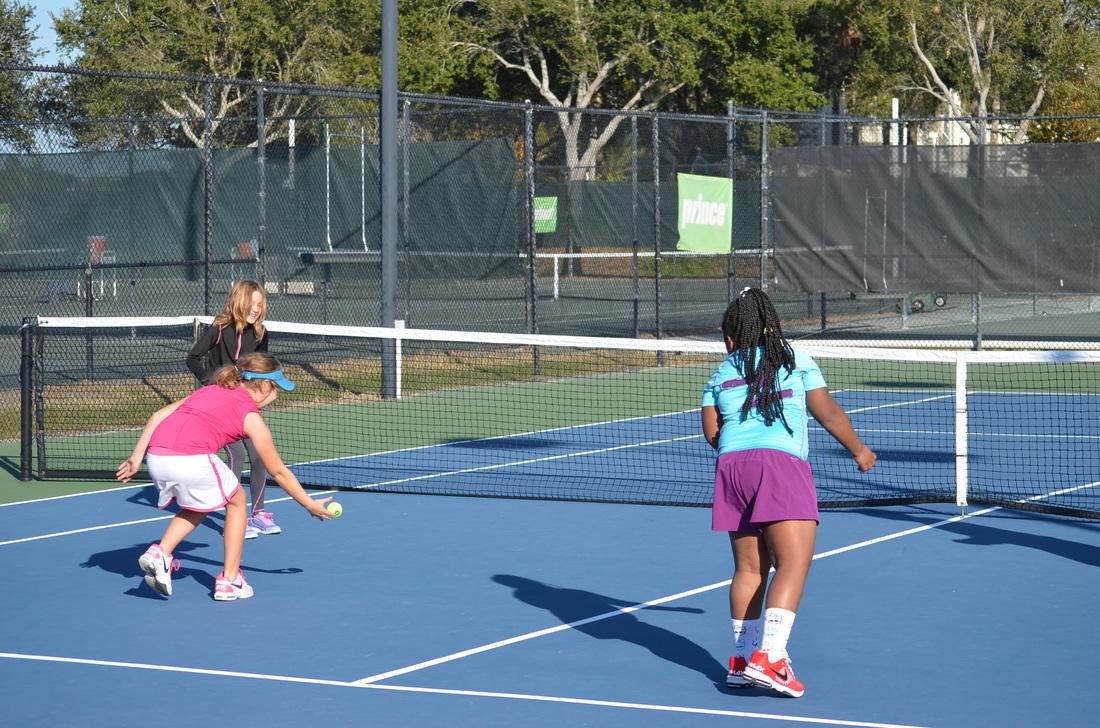

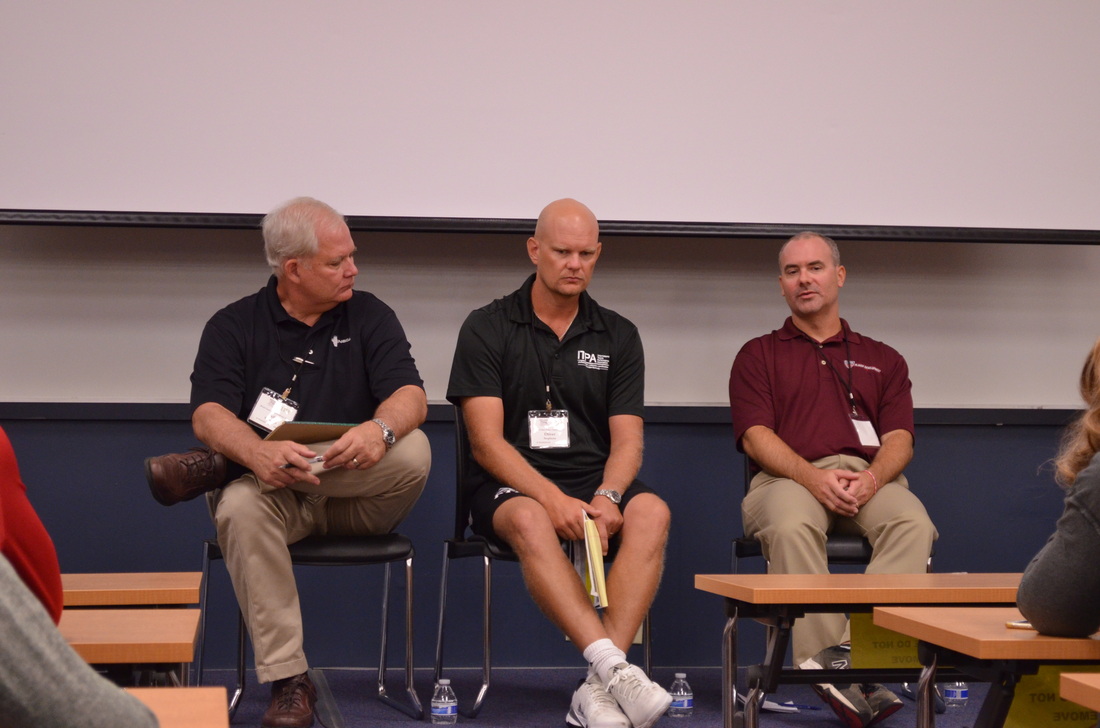
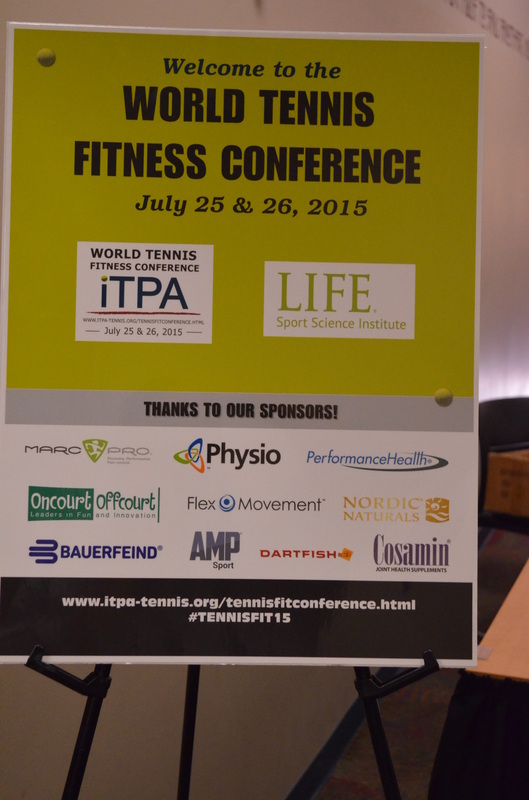
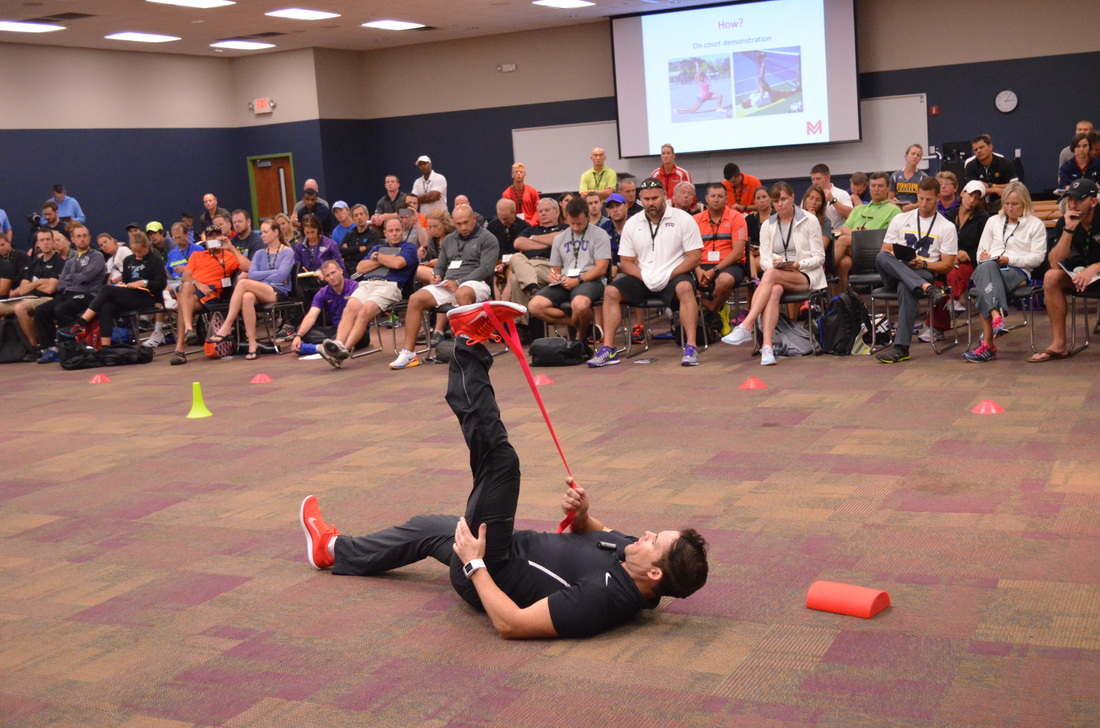
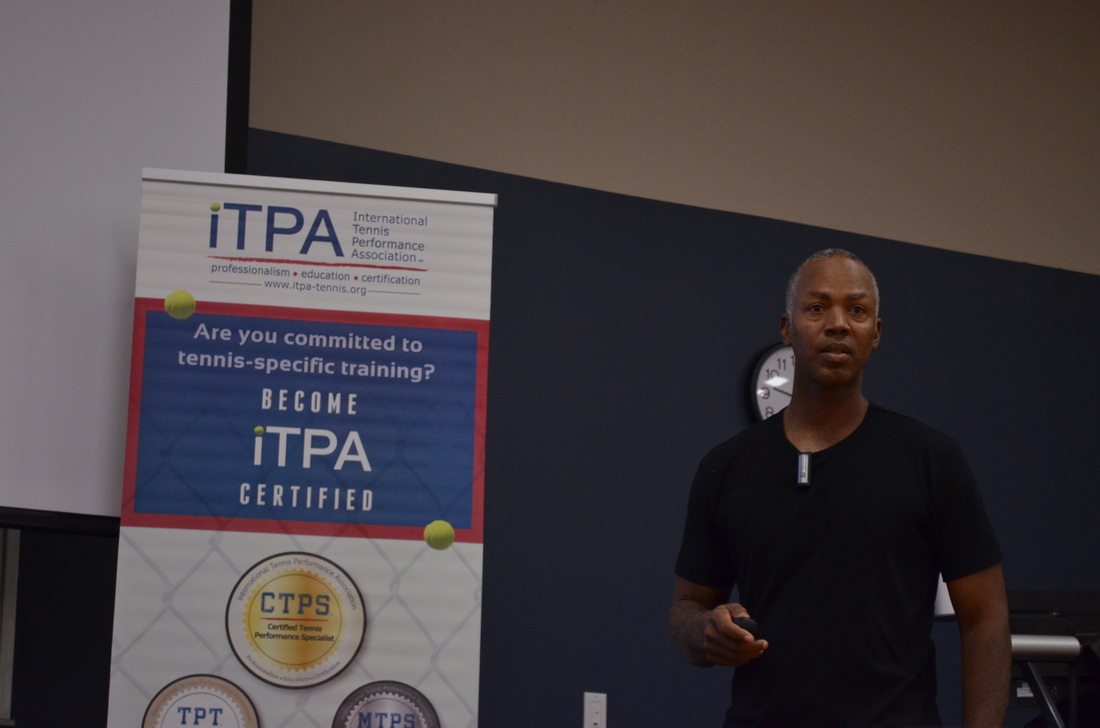
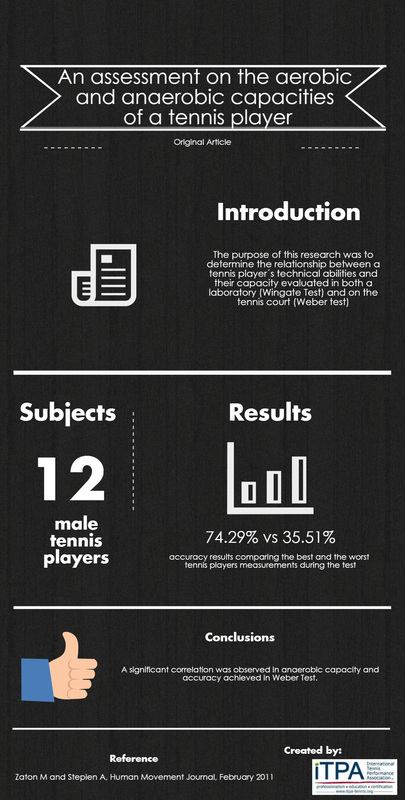
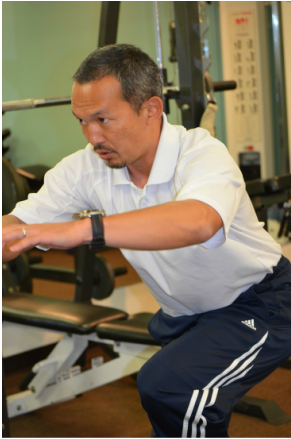



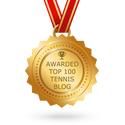
 RSS Feed
RSS Feed
